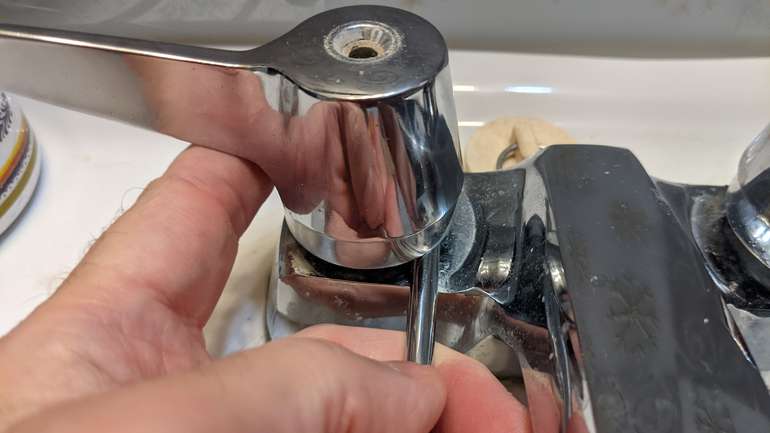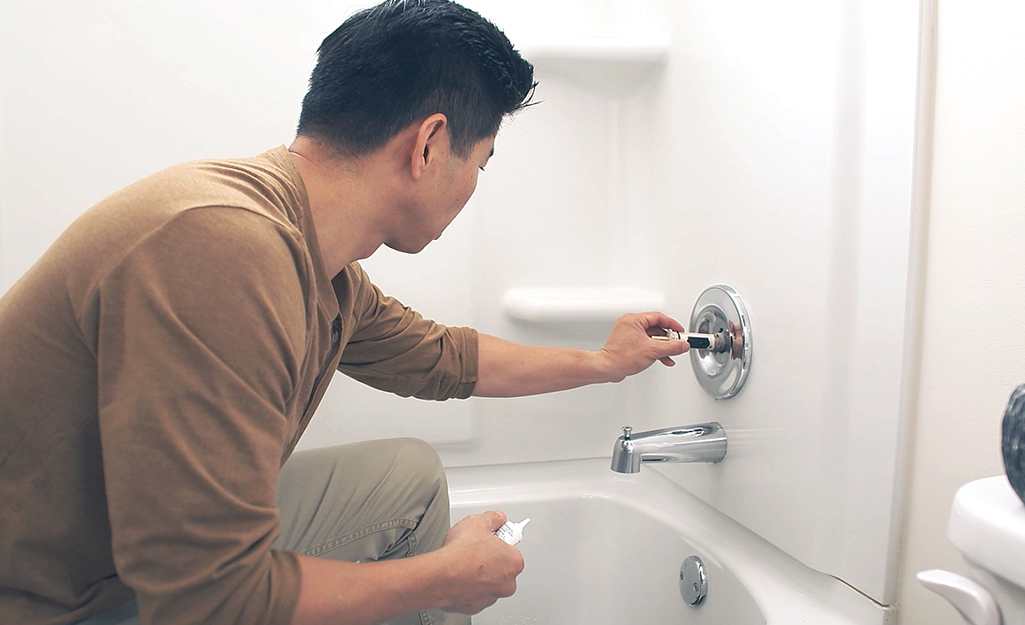This article further down relating to Water Dripping from Faucet: Why and How to Fix is totally enjoyable. Don't skip it.

Dripping faucets could look like a small hassle, yet their impact goes beyond just the nuisance of the audio. From wasting water to incurring unnecessary economic expenses and wellness threats, neglecting a leaking faucet can cause various effects. In this article, we'll look into why it's vital to address this usual household issue promptly and properly.
Waste of Water
Ecological Influence
Dripping taps add dramatically to water wastage. According to the Environmental Protection Agency (EPA), a solitary faucet trickling at one drip per secondly can throw away more than 3,000 gallons of water annually. This not just stress water sources yet additionally affects environments and wildlife depending on them.
Step-by-Step Overview to Repairing a Dripping Tap
Tools Called for
Before attempting to fix a dripping tap, gather the required devices, including an adjustable wrench, screwdrivers, substitute parts (such as washing machines or cartridges), and plumber's tape.
Typical Tap Issues and Their Solutions
Recognize the type of faucet and the certain concern creating the drip. Usual issues consist of worn-out washing machines, rusty shutoff seats, or faulty O-rings. Refer to supplier instructions or on the internet tutorials for step-by-step support on repair work.
Financial Costs
Enhanced Water Expenses
Past the ecological influence, dripping faucets can pump up water costs considerably. The accumulated wastage in time converts into higher energy expenditures, which could have been stayed clear of with prompt repairs.
Prospective Building Damage
In addition, extended leaking can cause damage to fixtures and surfaces surrounding the tap. Water buildup can trigger discoloration, rust, and even structural concerns if left neglected, leading to extra repair work expenses.
Health and wellness Issues
Mold And Mildew and Mildew Development
The continuous existence of wetness from a trickling faucet produces an ideal atmosphere for mold and mildew and mildew growth. These fungis not only jeopardize interior air high quality however also position health and wellness threats, particularly for people with respiratory system conditions or allergic reactions.
Waterborne Conditions
Stagnant water in dripping faucets can end up being a breeding ground for bacteria and various other pathogens, raising the threat of waterborne conditions. Pollutants such as Legionella germs flourish in stationary water, potentially resulting in severe health problems when ingested or inhaled.
DIY vs. Professional Repair service
Benefits and drawbacks of DIY Repair
While some may attempt to deal with a dripping faucet themselves, DIY repair services feature their very own collection of challenges. Without proper understanding and devices, do it yourself efforts can worsen the concern or lead to incomplete repairs, prolonging the problem.
Benefits of Hiring a Specialist Plumber
Hiring a specialist plumber makes certain that the underlying root cause of the dripping faucet is resolved properly. Plumbing technicians have the proficiency and tools to detect and fix faucet issues efficiently, saving time and lessening the threat of more damages.
Ecological Duty
Private Contribution to Conservation
Taking obligation for dealing with trickling taps straightens with wider efforts toward water preservation and ecological sustainability. Every individual's actions jointly make a considerable influence on protecting precious resources.
Lasting Living Practices
By focusing on timely repairs and adopting water-saving behaviors, people contribute to sustainable living techniques that benefit both present and future generations.
Preventive Measures
Regular Upkeep Tips
To avoid dripping taps, execute regular maintenance such as cleaning up aerators, checking for leakages, and changing damaged parts quickly. In addition, consider installing water-saving devices or updating to extra effective components.
Significance of Prompt Repairs
Resolving leaking faucets as quickly as they're seen avoids further water waste and prospective damages, ultimately saving both water and money in the long run.
Effect On Residential Or Commercial Property Value
Assumption of Well-Maintained Property
Keeping a property in good condition, consisting of dealing with maintenance concerns like leaking taps, enhances its viewed worth and worth among potential purchasers or lessees.
Impact on Resale Value
Qualities with properly maintained plumbing fixtures, including taps, command greater resale worths in the real estate market. Dealing with leaking taps can add to a favorable impression during building evaluations and settlements.
Final thought
Resolving a leaking tap goes beyond mere comfort; it's an important step toward conserving water, decreasing economic costs, and safeguarding health and wellness and residential or commercial property. Whether via DIY fixings or professional aid, acting to take care of trickling taps is a tiny yet impactful method to promote liable stewardship of resources and contribute to a healthier, a lot more lasting future.
How to Fix a Leaky Faucet: Step-by-Step Repair Guide
A leaky faucet may seem like a simple annoyance, but if it's not fixed promptly, that leak could cost hundreds to potentially thousands. From water damage to mold, mildew, and high water bills, even a tiny leak can be catastrophic if left unattended. Damage like this can even affect the overall value of your home, so it's important to take the right approach for leaky faucet repair. You may need the help of a plumber in some cases, but we've got a few tips you can try on how to fix a leaky faucet before calling the pros.
Four Faucet Types
When you're learning how to fix a leaky faucet, the first step is knowing what kind of faucet you're working with! There are four common types.
Cartridge Faucets
Cartridge faucets come in one- or two-handled varieties. In one-handled cartridge faucets, hot and cold water combines in a single cartridge. In the two-handled versions, hot and cold water are controlled separately and mixed in the faucet.
Ball Faucets
Ball faucets have a single lever you push up and down to adjust the pressure and rotate to change the temperature. A slotted metal ball controls the amount of water allowed into the spout.
Compression Washer Faucets
They're the oldest type of faucet, but they're still used in many homes — especially older ones. Compression faucets have two separate handles that, when turned, raise or lower the washer that seals a water valve. This valve stops water from flowing through the faucet when it is turned off.
Disc Faucets
Disc faucets rarely need to be repaired due to their maintenance-free design. The water flow is controlled by two discs — the upper one raises and lowers against a fixed lower disc, creating a watertight seal. If your disc faucet starts leaking, you may need to replace the seals or clean residue buildup from the inlets.
Fixing a Leaky Faucet
Step 1: Turn Off the Water
Whether you're learning how to fix a leaky bathtub faucet or how to fix a leaky kitchen faucet, always turn off the water supply to your working area when you're fixing a leak. The last thing you want is a flood added to your list of things to fix.
Look for the shutoff valves below your sink or around the tub and turn them clockwise to stop the water flow. If your faucet doesn't have shutoff valves, you may need to turn off the water for the whole house. Check to make sure it's off by turning the faucet on. If nothing comes out, you're ready to start the repair.
Step 2: Take Apart the Faucet
How you disassemble your faucet depends on the type of fixture you have. You can use a flathead screwdriver to remove the caps on top of the handle or handles for cartridge and compression faucets. Inside, you should see handle screws. Unscrew these with a screwdriver to remove the handle.
Disc- and ball-style faucets will typically have an inlet screw near the handle, and removing that will reveal the interior of the faucet.
Detach the Valve Stem
For cartridge- and compression-style faucets, you'll see the inner valve stem or cartridge once you remove the faucet handles. If you have a compression faucet, unscrew the brass valve stem. If you have a cartridge faucet, pull out the cartridge. If your cartridge has been in place for a while, it may require some tools or extra force to remove it due to mineral deposits.
Examine and Replace Parts
Once you've removed the parts, check them out to confirm what needs to be replaced. You may see corroded rubber washers, O-rings, stems, or cartridges. On a ball-style faucet, check the seats and springs for damage.
If you need to repair a leaky disc faucet, check the inlet and seals on the lower disc.
Once you determine what parts must be replaced, visit your local hardware store. Bring the damaged parts with you to ensure you can purchase the correct components to replace them.
Clean Valves and Faucet Cavity
If you've removed a stem or cartridge, you may notice mineral buildup in the faucet's threads. Use white vinegar to clean the valve seat by soaking it for a few minutes, then scrub it away with a soft toothbrush and rinse with warm water. You can also clean the interior of the faucet in the same way.
Reassemble the Faucet
Once your faucet is cleaned and the required parts have been replaced, it's time to reassemble it. Put the pieces back together and slowly turn the water supply back on. Doing this slowly is crucial because too much initial water pressure can damage the new hardware you've just installed.
https://homewarranty.firstam.com/blog/how-to-fix-leaky-faucet

I ran across that article on Why Is It Important To Fix Your Leaking Tap/Faucet? while doing a search on the internet. If you enjoyed our blog entry please consider to pass it around. I thank you for reading our article about Why Are My Faucets Dripping (And Can I Fix It Myself)?.